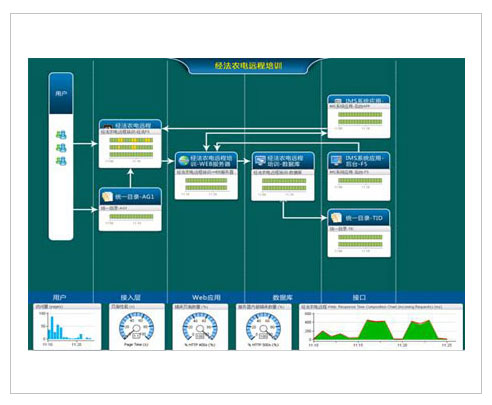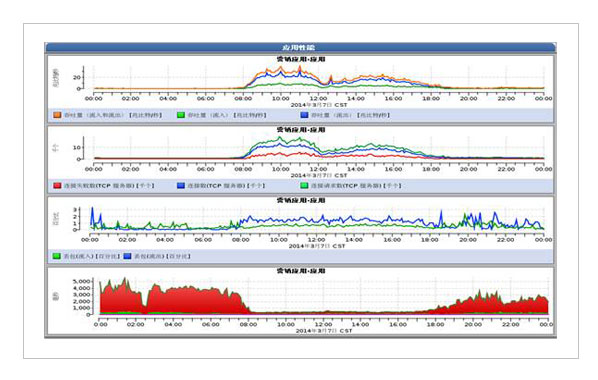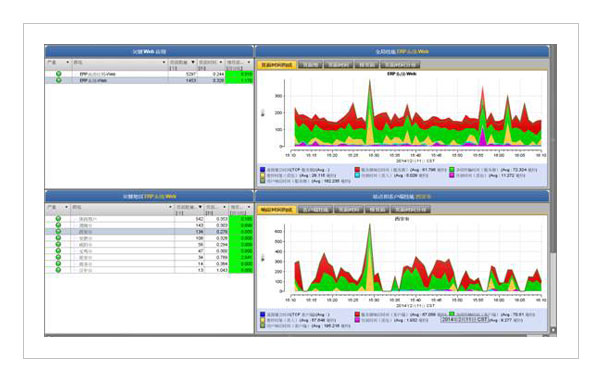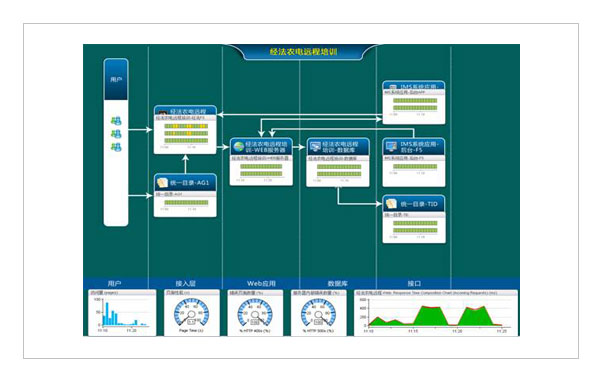 Overview
Overview
With the emergence of a large number of new technologies and movement of business development trends, companies have made significant investments over the past few years to maintain their momentum in the current fierce competition. From a company’s perspective, distributed collaborative work has become more prevalent and internet technology has transformed production activities. When companies conduct business activities via IT technologies, the level of implementation and performance will directly affect their production efficiency. Under these circumstances, information system is no longer an auxiliary tool for production and management but an important production material for the company.
In general, as companies’ dependence on their information system grows, the performance of the information system is directly linked to the service quality of the company. In other words, a company’s operation will be disrupted if the information system fails; low-quality infosystem will result in operation deficiencies and customer dissatisfaction. In the case of system instability or failure, the longer it takes to fix the problem, the greater cost the company will bear.
Companies face unprecedented challenges due to the use of an increasing number of network devices, servers, and software and complex interactions among the devices. Despite the existing skills and technologies the company possesses, the root causes of many problems, including but not limited to network interruption, system slowdown, and system downtime, are difficult to be tracked down.
Compared to traditional network component analysis technology that only analyzes a single network element (i.e. a switch or server), an Application Performance Management (APM) system emphasizes the automatic association and intelligent positioning of a set of associated element network. As performance deficiencies and network failures are usually not caused by a single component, only through correlation analysis can the operation and maintenance staff be notified of the current status of each element affecting the user experience so as to directly locate the application with poor access performance. As a result, the root problem is tracked down and the issue is simplified.
APM solution provides a new performance management system for network and information. It improves end-to-end user experience monitoring through three mechanisms, including network-wide visibility, application performance monitoring and analysis, and intelligent early warning. Moreover, it helps O&M personnel forecast and fend off system failures, ensures the reliability of information systems, amplifies the value of information systems as production materials, and enhances the core competitiveness of the company.
Value of the Solution
APM focuses on in-depth comprehensive analysis and management of information system performance. It can quickly locate of the root causes of problems, shorten the time-consuming problem-solving process, and assist the O&M department in solving various complex problems that involve:
Changing the monitoring perspective: Monitor the real service quality of the application through real user access to the application's network traffic.
Changing from passive to active: Use APM to configure early warning. If there is a decline in the quality of application services, early warning and early processing are required.
User-aware monitoring: Monitor the availability and application performance of the system 24-7 from end-user perspective.
Proactive operation and maintenance: Find and resolve potential problems in the current system in a timely manner to avoid performance problems and improve user satisfaction.
Failure data archiving: Automatically save the original network data packet. The administrator can retrieve the required data at any time.
Fast fault location: Quickly locate faults and distinguish network and application server delays.
Fault analysis: Through the automatic archiving of fault site data, the fault site data can be played back at any time, allowing the administrator to handle the fault.
Business transactions identification: Customize the transaction code, retrieve and download relevant data package according to the transaction code.
Quickly data retrieval: Search according to the user's UID, IP, transaction time, etc. to solve the performance problems encountered by the user in time.
Smart association anaysis: Connect the network, applications, and services together and follow the business logic to find the root causes of the failure.
Business logic discovery: Provide complete end-to-end application performance monitoring according to the business logic of the application system and accurately identify the response status of each application.
Different types of reports available: WYSIWYG data reports can be customized according to user needs.
Customer Service
Grid Electric provides a professional technical team to offer a wide variety of services such as 24/7 hotline technical support, remote support online diagnosis, on-site fault diagnosis and elimination, regular on-site inspection, comprehensive product training, comprehensive information services, free upgrades for versions with same functionalities, free upgrades for product bugs, lifetime customer support, comprehensive technical documentation, saving customers lots of troubles.
Star Recommendation
Information System Application Performance Management System
The APM system currently has multiple sets of successful implementation cases at the provincial level of the State Grid. This includes State Grid Shaanxi Electric Power Company, State Grid Jiangxi Electric Power Company, State Grid Henan Electric Power Company, and State Grid Tianjin Customer Service.
The APM system entered State Grid Henan in August 2013, State Grid Shanxi in November 2013, State Grid Jiangxi in October 2014, and the State Grid Tianjin Customer Service Center in November 2015. In the past six years, Grid Electric has succeeded in deep analysis, rapid search, and fault location for the provincial-level units of the State Grid and formed a complete early warning system .
On-Site Implementation




Safety Test Report
